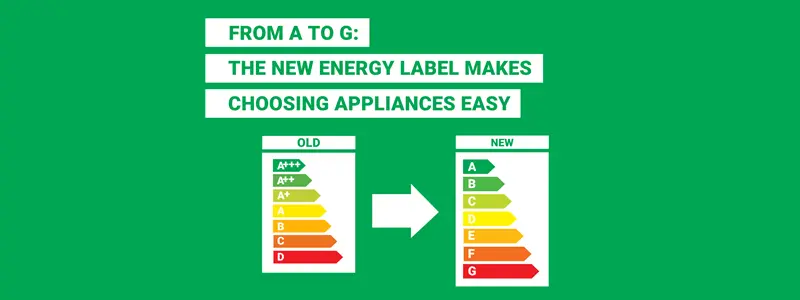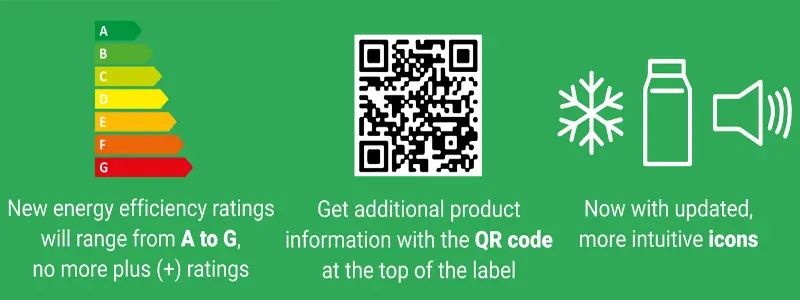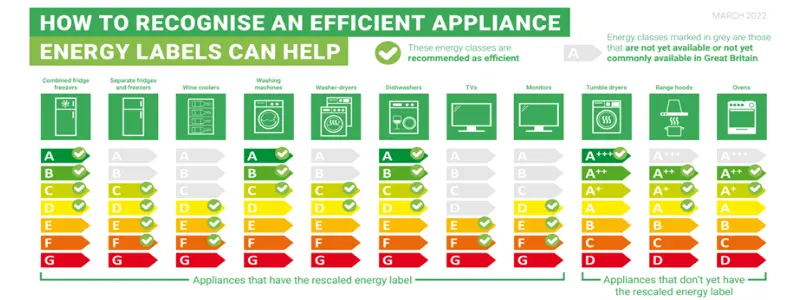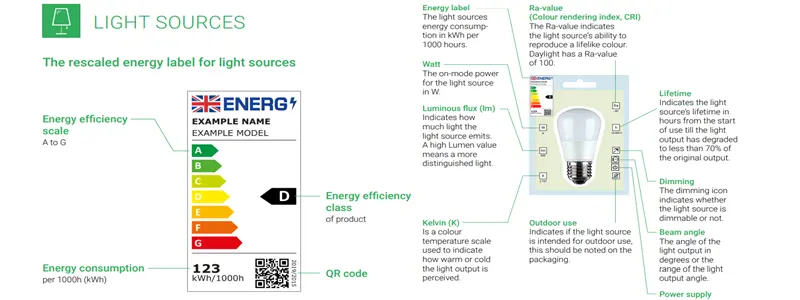Introduction to the New Energy Ratings Label
In March 2021, the UK introduced an updated new energy ratings label to provide consumers with clearer, more accurate information about appliance energy efficiency. Although the label retains the familiar traffic light color scheme, the rating system itself has shifted from the old A+++ to D scale to a simplified A to G scale. This update aims to make it easier to identify the most energy-efficient products and support more informed purchasing decisions.
This guide explores everything you need to know about the new energy ratings label, including what it represents, the changes, the reasons for the update, and how to interpret these labels when choosing new appliances.
What Is the New Energy Ratings Label?
The new energy ratings label is a redefined way of communicating the energy efficiency of household appliances such as refrigerators, washing machines, TVs, and more. From March 2021 onwards, manufacturers must label designated appliances using the updated scale, helping customers quickly differentiate between efficient and inefficient products.
Despite the new alphabetic scale, the design keeps the iconic colored bands from green (A, most efficient) to red (G, least efficient), maintaining familiarity while enhancing clarity.

The New Energy Ratings Explained
The revised scale ranges from A to G, removing all the "plus" symbols (+) common in the previous system (A+, A++, A+++). This simplification allows for a straightforward comparison between models and better highlights differences in efficiency.
The new label applies to a specific list of appliances:
- Refrigerators
- Freezers
- Wine coolers
- Washing machines
- Washer dryers
- Dishwashers
- TVs and electronic displays
Appliances Not Yet Updated
Certain products like tumble dryers, range hoods, and ovens are not yet using the new label but are expected to adopt it in the future, although no specific rollout date has been announced.
How Does the New Scale Compare to the Old One?
You cannot directly translate old ratings to the new system because the testing methods and efficiency calculations have changed. For example, a previous A+++ product might rank as a B or lower on the new scale. This shift means consumers must review labels carefully rather than assuming previous standards still apply.
Why Did the Energy Rating Scale Change?
The original rating system was created over 25 years ago. Since then, appliances have become significantly more efficient, clustering at the top end of the scale (mostly A+++). This saturation made it hard for consumers to tell products apart.
Many users found the old plus-based labels confusing, often misinterpreting products with any A rating as equally efficient. This reduced the incentive for manufacturers to push for better efficiency improvements.
The new A to G scale removes complexity and paves the way for future innovation by clearly differentiating efficient appliances.

New Features on the Energy Ratings Label
The updated label adds new tools to help shoppers make more informed choices:
- QR Code: Allows users to scan with smartphones to access detailed product energy data and specifications.
- Intuitive Icons: Displays additional product information such as noise level, water consumption, and capacity depending on the appliance type.
Examples of Icons on the New Label
- Capacity: Measured in liters for refrigerators, kilograms for washing machines, place settings for dishwashers, or bottle count for wine coolers.
- Water Consumption: Liters used per eco mode cycle.
- Spin Drying Efficiency: Rated from A to G for washing machines.
- Cycle Duration: Time to complete eco mode cycle in hours and minutes.
- Noise Level: Emissions in decibels rated A to D.
- HDR Mode Energy Use: kWh per 1000 hours for electronic displays.
- Resolution and Screen Size: Pixels and diagonal measurement in centimeters or inches.
How to Recognize an Efficient Appliance
Efficiency levels vary significantly by product type. For example, the highest energy rating currently achievable for TVs is D, while some washing machines and fridges already reach A on the new scale. Understanding these distinctions helps consumers set realistic expectations and make smarter choices.

Variations of the New Energy Ratings Label by Appliance
While the main components of the label (rating scale, QR code, kWh figure) remain consistent, the additional icons and energy consumption units vary by appliance category:
| Appliance Type | Energy Consumption Display | Additional Info Icons |
|---|---|---|
| Washing Machines & Dishwashers | kWh per 100 cycles (eco mode) | Capacity, water use, spin drying, duration |
| TVs & Displays | kWh per 1000 hours | Resolution, screen size, HDR energy use, noise |
| Refrigerators & Freezers | kWh per annum | Capacity (litres), noise level, frost control |
Tips for Choosing Efficient Appliances
- For washing machines and dishwashers, select a size matching your household needs to avoid unnecessary energy waste by running partially full loads.
- Choose dishwashers with eco-modes to reduce water and power use.
- Use appliances with digital thermostats for better temperature regulation (e.g., keeping a fridge at 5°C or a freezer at -18°C).
- Consider noise level ratings if you need a quiet appliance, especially for kitchens or living areas.
- For TVs, consider smaller or more energy-efficient screen sizes, and make use of power-saving modes.
New Energy Ratings Label for Light Sources
The new energy rating system for light sources was introduced in October 2021 and undergoes an 18-month transition period ending March 31, 2023. After this date, only the new labels will be permitted. This update coincides with global moves to phase out inefficient lighting, enforcing stricter standards on bulbs and light fixtures.
Light source labels are similarly packed with icons displaying efficiency, brightness, lifetime, and energy consumption to help consumers understand product performance better.

Conclusion: The Impact of the New Energy Ratings Label
The 2021 update to the energy rating label represents a significant step toward greater transparency and consumer empowerment. By simplifying the rating scale and adding interactive features like QR codes and detailed icons, shoppers gain deeper insights and clearer comparisons for energy-efficient appliances.
Manufacturers are incentivized to innovate, and consumers are better equipped to select products that reduce energy consumption, save money, and reduce environmental impact.
While it may take time to fully adjust to the new system, this change is set to drive progress toward greener and more sustainable household technology.
